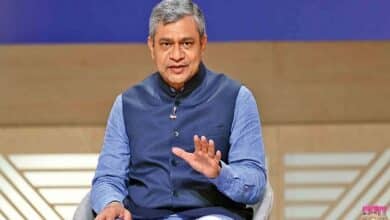Radha Krishna: The Eternal Divine Love Story That Transcends Time

The Mythological Origins of Radha Krishna
Radha Krishna is one of the most revered and divine pairs in Hindu mythology, symbolizing pure, unconditional love that transcends the physical world. The tales of Radha Krishna are deeply rooted in ancient scriptures like the Bhagavata Purana, Brahma Vaivarta Purana, and various poetic works by saints and sages. Lord Krishna, an avatar of Vishnu, and Radha, a gopi (cowherdess) from Vrindavan, are not just two romantic figures but are representations of the soul’s intense longing and devotion for the divine.
The divine bond between Radha Krishna is often seen as a metaphor for the relationship between the jivatma (individual soul) and the paramatma (supreme soul). Radha’s unwavering devotion and surrender to Krishna have made her a symbol of bhakti (devotion), and their story is revered by millions of devotees around the world.
The Symbolism Behind Radha Krishna’s Divine Love
The love of Radha Krishna goes far beyond the romantic or physical realms. It represents a union that is spiritual, eternal, and unattached to worldly expectations. Radha Krishna’s love is often interpreted by spiritual teachers as the ideal form of divine love, where Radha symbolizes the soul and Krishna, the Supreme Being.
Every interaction between Radha Krishna is layered with deeper meanings. Their playful pastimes (leelas) in Vrindavan, such as ras leela and flute-playing scenes, are symbols of the soul’s dance with the divine. This unique relationship conveys that true love is selfless, pure, and divine, untouched by ego or desire.
Artists, poets, and musicians throughout centuries have tried to capture the ethereal love of Radha Krishna, adding new layers to their symbolism in art, dance, and music. Their divine union continues to inspire lovers and seekers of truth alike.
Radha Krishna in Literature and Art
Radha Krishna has held a profound place in Indian literature, poetry, music, and art. Their stories have been immortalized in classical Indian works such as Jayadeva’s Gita Govinda, which vividly depicts their passionate yet spiritual relationship. The Gita Govinda is a poetic masterpiece that highlights the emotional intensity and transcendental love between Radha Krishna.
Painters from the Mughal and Rajput eras created intricate miniature paintings of Radha Krishna’s divine moments. These artworks usually depict scenes from their playful childhood, secret meetings in the forest, or the enchanting ras leela. Each brushstroke reflects the spiritual ecstasy and divine energy of Radha Krishna.
Even in modern times, Radha Krishna’s presence in literature and media remains strong. Numerous television shows, devotional music albums, and theatrical performances continue to celebrate their love, keeping the divine couple alive in the hearts of devotees.
Festivals Celebrating Radha Krishna’s Eternal Bond
Many festivals in India and around the world are dedicated to Radha Krishna, celebrating their divine pastimes and immortal love. The most prominent among them is Janmashtami, the birth anniversary of Lord Krishna, which is observed with grandeur and deep devotion. While Krishna’s birth is celebrated, Radha Krishna’s union and stories are an integral part of the celebration.
Another significant festival is Radhashtami, which marks the birth of Radha. Temples are adorned, special bhajans (devotional songs) are sung, and devotees engage in fasting and prayers to honor Radha Krishna. The famous Holi festival also holds great significance, especially in regions like Vrindavan and Barsana, where the divine couple’s playful color-throwing pastimes are reenacted.
During these festivals, Radha Krishna idols are dressed beautifully, and various rituals like aarti, kirtans, and dramatic enactments (leelas) are performed. These celebrations serve as a reminder of the divine, transcendental nature of Radha Krishna’s love.
Radha Krishna in Modern Devotional Practices
In today’s spiritual world, Radha Krishna remains the ultimate ideal for devotees seeking a deeper connection with the divine. Temples dedicated to Radha Krishna can be found not only in India but across the globe. ISKCON (International Society for Krishna Consciousness), for instance, plays a significant role in spreading the teachings of Radha Krishna worldwide.
Daily devotional practices such as chanting the Hare Krishna Mahamantra (“Hare Krishna, Hare Krishna, Krishna Krishna, Hare Hare; Hare Rama, Hare Rama, Rama Rama, Hare Hare”) are centered around invoking the divine energy of Radha Krishna. Devotees engage in kirtans, reading scriptures like the Bhagavad Gita, and practicing seva (service) to express their devotion.
Radha Krishna’s message has found resonance in the hearts of millions, especially in the West, where more people are embracing bhakti yoga as a way of life. Their divine love offers a spiritual refuge in the midst of material chaos, helping seekers connect to their inner self.
Spiritual Lessons We Learn from Radha Krishna
The story of Radha Krishna is more than just a divine romance—it is filled with timeless spiritual teachings that can guide anyone on the path of self-realization and devotion. One of the core lessons from Radha Krishna’s story is the power of unconditional love. Radha’s love for Krishna was without expectations, reflecting the soul’s pure yearning for unity with the Divine.
Radha Krishna teaches the importance of surrendering to a higher power, trusting in divine timing, and maintaining unwavering faith even in separation. Their viraha (divine separation) symbolizes the intense spiritual yearning and the beauty of devotion that does not rely on physical presence.
In spiritual philosophy, Radha Krishna also represent the masculine and feminine energies in perfect harmony. While Krishna symbolizes wisdom and action, Radha symbolizes love and devotion. Together, they create a balance that leads to spiritual fulfillment.
Temples and Pilgrimage Sites Dedicated to Radha Krishna
Radha Krishna devotees often embark on pilgrimages to sacred places associated with the divine couple to deepen their spiritual practice. One of the most revered pilgrimage destinations is Vrindavan, a holy town in Uttar Pradesh, believed to be the playground of Radha Krishna.
In Vrindavan, several temples like Banke Bihari Temple, Radha Raman Temple, and Prem Mandir are dedicated to Radha Krishna. These temples are known for their unique rituals, beautiful idol decorations, and a divine atmosphere that transports devotees into a world of spiritual ecstasy.
Another important place is Barsana, the birthplace of Radha. The Radha Rani Temple in Barsana is a must-visit for those who wish to experience Radha Krishna’s divine energy. Nandgaon, the village of Krishna’s foster father Nanda, is also closely associated with their leelas.
Apart from India, Radha Krishna temples can be found in countries like the USA, UK, Russia, and Australia, showing their global significance. Visiting these temples and engaging in their devotional practices brings devotees closer to the divine essence of Radha Krishna.
Conclusion
Radha Krishna represents more than just a mythological tale—they embody the divine essence of eternal love, spiritual wisdom, and the soul’s journey towards God. Their story continues to inspire devotees across generations, cultures, and borders, reminding us of the beauty of selfless devotion, divine union, and eternal truth.
In a world full of chaos and material desires, the teachings and love of Radha Krishna offer peace, guidance, and a higher sense of purpose. Whether through prayer, festivals, temple visits, or spiritual practices, invoking Radha Krishna in our hearts can transform our lives and deepen our connection with the divine.
FAQs
1. Why is the love of Radha Krishna considered divine and eternal?
The love between Radha Krishna is beyond physical attraction. It symbolizes the soul’s eternal longing for union with the Divine and is rooted in pure devotion (bhakti), making it spiritual and everlasting.
2. Did Radha Krishna get married according to Hindu mythology?
In most scriptures, Radha Krishna did not marry, which adds a layer of spiritual symbolism. Their separation highlights the beauty of unconditional love and divine longing, rather than worldly attachment.
3. What is the significance of Radha Krishna in Bhakti Yoga?
In Bhakti Yoga, Radha Krishna represents the perfect relationship between the devotee and God. Radha’s surrender and unwavering love become a model for devotees to follow on the path of devotion.
4. Where can I find famous Radha Krishna temples in India?
The most famous Radha Krishna temples are in Vrindavan, Barsana, Mathura, and Nandgaon. Notable temples include Prem Mandir, Banke Bihari Mandir, and Radha Raman Temple.
5. How can one worship Radha Krishna at home?
To worship Radha Krishna at home, one can set up a small altar with their idols or images, offer flowers, incense, chant the Hare Krishna mantra, and read scriptures like Bhagavad Gita and Gita Govinda.





